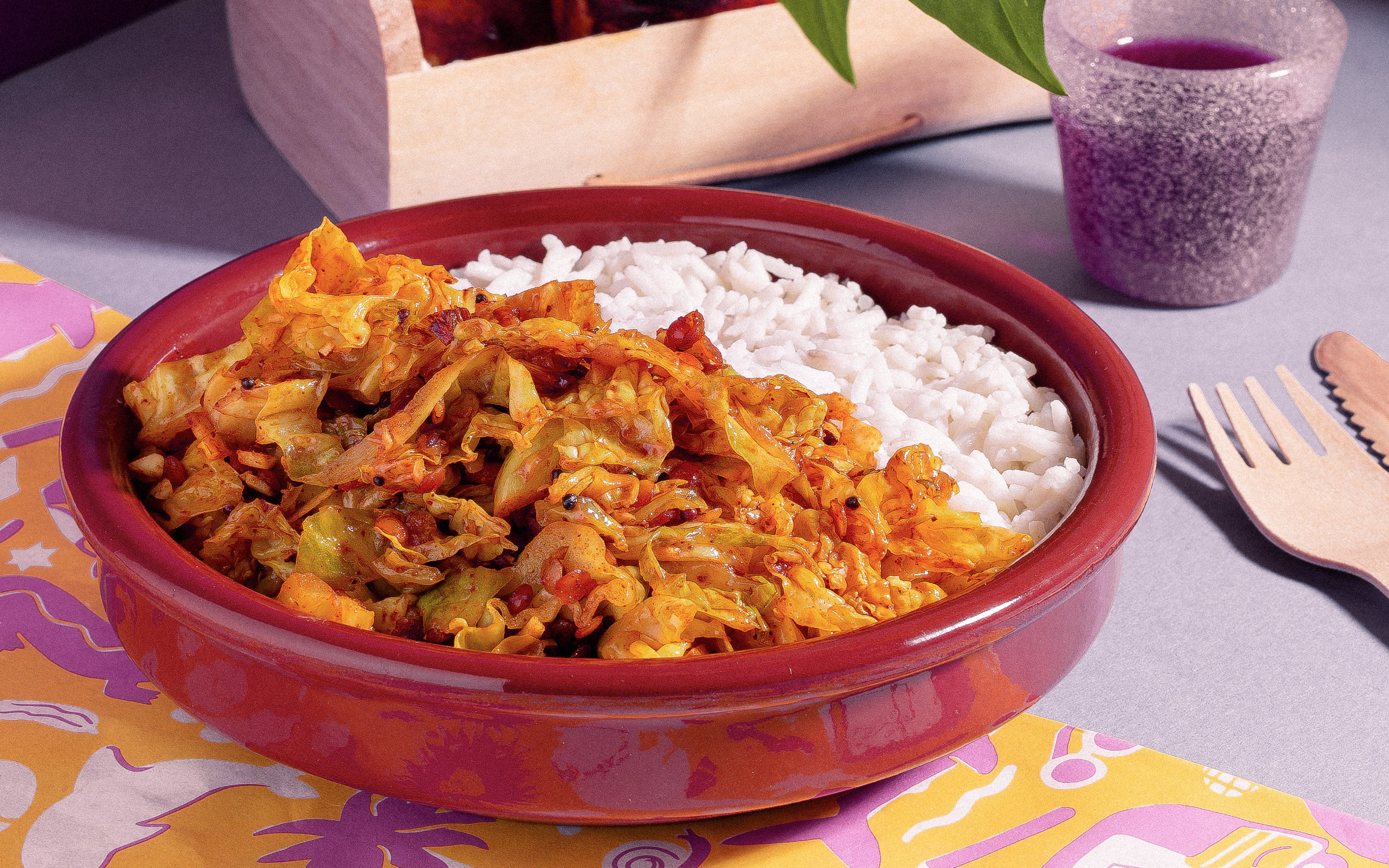The New Gastronome
Cabbage Palya
The Lunchbox Issue
by Sharon Mendonce
by Sharon Mendonce

As someone who’s been working in the food industry for the past couple of years, I often ask myself what’s next: what food trend, what new ingredient? This question has managed to creep into the way I think about my life. I spend a good chunk of time thinking about how my current choices affect my future. While ‘eat less meat to help the climate’ admittedly may not be the best advice for everyone, I think it couldn’t hurt to keep a watch on my meat consumption.
When thinking of vegetarian meals, it’s easy to fall into the ‘what’s next’ train of thought – some faux meat, perhaps? It’s easy to forget that vegetarianism has been around for centuries and is a huge part of some cultures.
The cabbage recipe I’ve included in my lunchbox is an old family favourite. It’s quick, delicious, and, like most Indian food, tastes better the next day. At home, we usually have it with fish that’s first marinated in a chilli-vinegar paste and then fried. In the spirit of keeping the lunchbox vegan and because fried fish doesn’t transport great, I’ve replaced the fish with a side of spiced potatoes. With the warm spices and acid, they cut through the creaminess of the coconut milk nicely.
If you’re a novice with spices, this recipe will help you ease into cooking with them. As a general rule of thumb, for the powders, you want to cook them until fragrant and turn from vibrant to jewel-coloured tones. While for the ‘seeds’, you want to listen for popping and cook them until they smell toasted. Enjoy the experience!
A. D V. E. R. T. I. S. I. N. G
Ingredients:
(makes two servings)
Wash the rice thrice in cold water. Next, add the oil to a pot, and when it’s warm, add the washed rice to it and lightly sauté.
Add the water to the pot, salt it, and once it comes to a boil, immediately reduce the flame to a simmer and cover the pot using a lid. After 7 minutes, turn off the flame and let the rice sit in the pot for five more minutes with the lid still on.
Cabbage Palya:
Add the vegetable oil to a pan and heat until warm. To ensure it’s warm enough, drop a mustard seed into the oil and listen out for sizzling.
To the warm oil, add the mustard seeds, cumin seed and split chickpea lentils. Once the sizzling slows down and the mixture is fragrant, add the curry leaves, dry red chilies, asafetida and turmeric powder. Cook these until fragrant, too.
Add the garlic and onion to the pan, cook until translucent but not browned.
Add the cabbage to the pan, followed by a pinch of salt and sugar, and sauté.
Turn the flame to a simmer and finish the dish by adding the freshly grated coconut or coconut milk.
Tandoori Spiced Potatoes:
In salted water, boil the baby potatoes until partially cooked. Remove from water and set aside to cool.
Preheat the oven to 180°C and prepare a baking tray lined with parchment paper or foil.
Mix the Greek yoghurt, mustard oil, tandoori spice blend and salt.
Add the potatoes to the mixture and toss until evenly coated.
Bake the potatoes for about 15 minutes or until lightly charred.
Turn on your oven’s broiler and broil the potatoes for about 3-5 minutes, so they get a nice charred and crispy surface. Keep your eye on them so that they don’t burn.
Finish with lemon juice and coriander.

About the author
A Magistrale student at the University of Gastronomic Sciences, with a background in Nutrition and Culinary Arts, Sharon is figuring out how to help make the world a slightly better place for a whole lot of people. Her Italian is currently limited to names of ingredients, dishes and cocktails, but she’s working on changing that. She loves whipping up elaborate dinners, watching romcoms & 00’s pop music!

